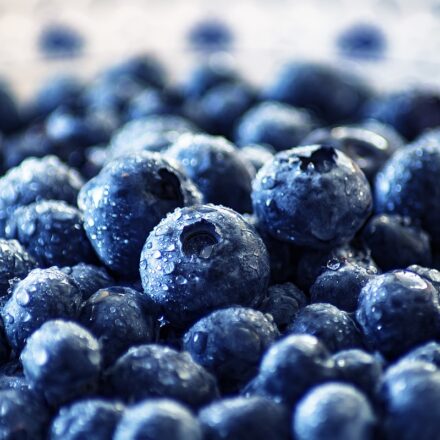Crayola just registered a trade mark in the US for the smell of their crayons. Your business can too as long as long as the scent is capable of distinguishing your business’s goods or services from your competitors.
The art (and scent) of childhood
Is there anyone who is not familiar with Crayola and their world-famous Crayola Crayons? For children they’re one of the first tools they use to express themselves creatively, turning blank pages into vibrant messy works of ‘art’. For parents, they represent childhood itself, evoking a unique sense of nostalgia for our own childhood experiences.
However, recently I was reminded of one feature of Crayola Crayons that I had not thought about for a long time: how they smell.
In July this year, the US Patent and Trademark Office (USPTO) issued registered trade mark number 7,431,203 to Crayola Properties, Inc (a subsidiary of Hasbro, Inc), for their crayons’ scent. Specifically, the ‘scent reminiscent of a slightly earthy soap with pungent, leatherlike clay undertones’ as it described in their new trade mark registered for crayons.
This description does slightly take some of the magic and joy surrounding the 1998 US National Toy Hall of Fame inductees, but lest we forget, Crayola is not just the maker of crayons that have fuelled the imagination of kids across the world for over a century, but a business too, one that has taken advantage of a relatively obscure form of intellectual property rights: ‘scent trade marks’ or ‘olfactory trade marks’.
Trade marks cover more than words and logos
When we think of trade marks, most people think of word marks and figurative marks such as logos. However, in Australia and around the world, the kinds of trade marks that can be registered has expanded to, among others, colours, shapes, sounds, movements, and scents.
Scent marks are not new but are relatively rare.
In Australia, only three scent trade marks have been registered: trade mark 1,241,420 for the scent of Eucalyptus Radiata for golf tees, trade mark 1,858,042 for ‘the smell of cinnamon (being principally Cinnamaldehyde) applied to non-wood based furniture’, and trade mark 700,019 for the ‘the strong smell of beer’ used for flights for darts, which was accepted but never registered.
More scent marks have been registered around the world such as:
- US trade mark 5,467,089 for the smell of Play-Doh or more specifically the ‘scent of a sweet, slightly musky, vanilla fragrance, with slight overtones of cherry, combined with the smell of salted, wheat-based dough’ for ‘toy modelling compounds’
- US trade mark 4,754,435 for the ‘scent of bubble gum’ for ‘shoes, sandals, flip flops, and accessories, namely, flip flop bags’
- US trade mark 2,463,044 for a ‘cherry scent’ for ‘synthetic lubricants for high performance racing and recreational vehicles’
- US trade mark 3,589,348 for ‘a minty scent by mixture of highly concentrated methyl salicylate (10wt%) and menthol (3wt%)’ for ‘medicated transdermal patches for the temporary relief of aches and pains of muscles and joints associated with arthritis, simple backaches, strains, bruises and sprains’
- UK trade mark 2001416 (now expired) for ‘a floral fragrance/smell reminiscent of roses’ for tyres
- EU trade mark 000428870 (now expired) for the scent ‘fresh cut grass’ for tennis balls.
Registering a scent trade mark in Australia
Obtaining a scent trade mark is not as straight forward as you may think.
Just like traditional word and figurative trade marks, scent trade marks must be capable of distinguishing a business’s goods or services from those of other businesses.
- The natural scent of a product will have no inherent adaptation to distinguish the goods. Examples of this include perfumes and eau de colognes, or the scent of birch wood or hickory wood for timber products. The scent here is the good itself or is a natural attribute of the good. Which is why Chanel’s application to register its ‘Chanel No 5’ fragrance for perfume in the UK in 1994 was not successful as the scent ‘is the essence of the product’.
- Similarly, masking scents will have no inherent adaptation to distinguish goods, as the scent has a functional purpose, that is to cover up unpleasant natural odours in the goods they sell. A good example of this is the use of lemon to scent household bleaches and laundry sprays.
- Scents that are common to a trade will also have no inherent adaptation to distinguish goods and/or services. For example, the scent of lemon is often used in dishwashing detergents, and while the addition of this scent has no functional use, over time it has been commonly added to these goods to make them feel more pleasant.
In the end, to be capable of distinguishing a business’s goods, the scent needs to be something apart from the goods themselves. It needs to be something added to distinguish your goods from those of your competitors.
Crayola inspiring us again
Crayola’s journey to trade mark the scent of its crayons is a perfect illustration of how difficult it can be to register scent trade marks. Crayola first applied for the trade mark for the smell of its crayons in 2018 and in 2019 the USPTO denied their request finding that ‘the scent of [the] applicant’s crayons are a natural byproduct of the manufacturing process for the goods and is a scent competitors will need to use for their products.’ Crayola then appealed, was rejected again in April 2022, but shared examples of its own crayons as well as those of its competitors to verify their distinctiveness, Crayola finally received registration this year.
However, this eventual success is likely to be leveraged by Crayola in the near future, with its CEO Pete Ruggiero stating that their ‘Crayola smell evokes strong memories’ and could potentially be used by releasing the scent through retail aisles to trigger nostalgia and potentially increase sales.
This success should inspire other businesses in Australia and around the world to take scent marks seriously.
Featured image: ‘Crayon’, XoMEoX, Wikimedia Commons, CC BY 2.0, 25 May 2015 (cropped).







